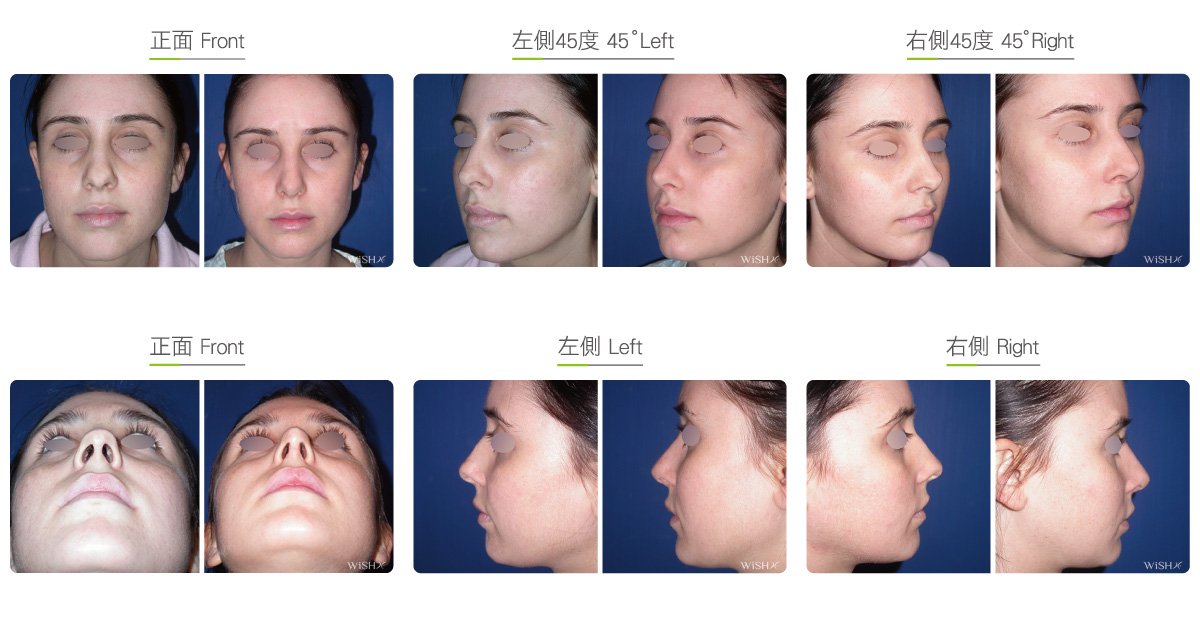Reduction Rhinoplasty
Reduction rhinoplasty (nasal reduction surgery) is frequently used for the correction of a Western nose, which has an exceedingly high nasal bridge or an excess pointed nasal tip. The surgery entails primarily narrowing the frontal nasal bridge and reducing the lateral height of the nasal bridge and tip. Surgical contents vary along with the patient’s original condition, including nasal bone reduction (corrective osteotomy or shaving osteotomy), hump osteotomy, partial nasal septal cartilage resection, nasal cartilaginous reduction or reconstruction, and even nasal columellar reduction and alar reduction. In brief, the surgery partially removes the excessive bone and cartilaginous tissues to restore the nose to the golden ratio. Nevertheless, attention should be paid to the strength of the peripheral cartilaginous structure and maximally mitigate tissue injuries or excessive modification to avoid functional complications such as nasal obstruction or nasal septal deviation.
Surgical conditions
Duration
- Type of anesthesia: IV sedation + local anesthesia or general anesthesia (nasal osteotomy)
- Surgical incision: At the bottom of the nasal columella and inside the bilateral nostrils
- Recovery: 5–7 days
- Removal of stitches: 7 days
General instructions
Fast from food and water on the day of operation (general anesthesia)
- Wear a tape or nasal plaster splint for 1 week postoperatively to stabilize the nasal bridge.
- Avoid smoking and alcohol and impacts or compressions to the nasal tip for 3 months postoperatively, and clean the intranasal wound in the morning and evening every day.
Ideal candidates
- Patients with an over-projected nasal bridge or a prominent hump
- Those with an exceedingly pointed, projected nasal tip or a very long nasal columella
- Those with an overtly broad, robust, pointed, or projected nose
Potential complications
- Temporary nasal obstruction
- Disturbance in respiration
- Nasal bridge depression
- Excessive correction
Surgical advantages
-
It is able to lower the nasal bridge height and nasal tip angle to restore the lateral nasal shape to the standard ratio.
-
It is able to reduce the frontal nasal length and width and improve the exceedingly prominent nose.
Surgical drawbacks
-
Cartilage and tissues removed cannot regenerate, with the reversibility being quite low.
-
Nasal obstruction or disturbance in respiration may occur due to nasal bone correction.
-
Over-correction may lead to a low nasal bridge or depressed nasal tip.

